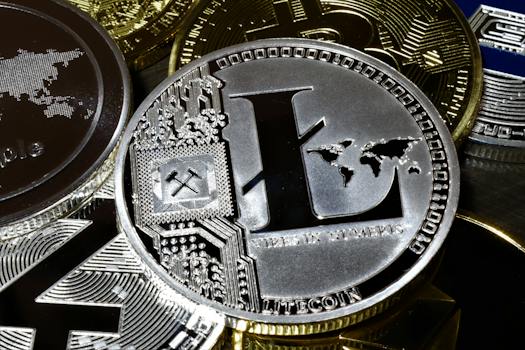Ethereum L2 Protocol Blast Sets New TVL Record above $900M
In a significant milestone for the cryptocurrency space, the Ethereum Layer 2 scaling solution, Blast Network, has reached a new record, with its Total Value Locked (TVL) surpassing $900 million, according to data from DeFiLlama, a leading provider of DeFi analytics. Pacman, the creator behind Blur, has reasons to celebrate as Blast’s smart contract address boasts a staggering $928.35 million in TVL. This impressive figure underscores the mounting significance and integration of Layer 2 solutions designed to bolster the scalability and throughput of blockchain networks.
TVL has become a pivotal metric within the DeFi sector, indicative of the aggregate sum of assets staked in a specific platform. As such, Blast Network’s leap over this $900 million threshold mirrors the mounting popularity of DeFi services and the flourishing investor confidence in decentralized ecosystems. Moreover, this surge shines a light on Layer 2 solutions as a compelling alternative to combat the challenges of congestion and towering transaction fees on the Ethereum (ETH) network.
The Underpinnings of Blast TVL’s Remarkable Surge
The steep escalation in Blast’s TVL can be credited to several catalysts. Primarily, the Layer 2 protocol’s scalability capabilities have empowered users with speedier and more economical transaction options in comparison to the traditional ETH mainnet. This enhancement in efficiency has been a key driver in attracting users and assets to the Blast ecosystem.
Further buttressing user trust, Blast’s unwavering commitment to security and interoperability has fostered a reliable image within the blockchain community’s conscience. Blast has swiftly risen to prominence in the Layer 2 scaling domain, with its TVL standing tall beyond the $900 million mark—a testament to the platform’s ascendancy in this innovative sphere.
Blast Preps for Mainnet
Blast Network, bolstered by a remarkable $20 million funding round spearheaded by venture capital heavyweight Paradigm, has kept the blockchain community abuzz with anticipation for its mainnet launch, projected for February 2024. In preparation for the launch, the firm has intensified the hunt for elite talent, specifically a senior DevOps Engineer and a senior protocol engineer.
Marking an advantage for blockchain enthusiasts, Blast’s service suite is Ethereum Virtual Machine (EVM) compatible, ensuring a seamless linkage with assorted protocols, hence bolstering liquidity and accessibility for users. Interestingly, the newly unveiled L2 network entices early access members with a lucrative 4 percent yield on Ethereum and a 5 percent yield on Stablecoins deposits. With the projected mainnet go-live date, users could likely initiate withdrawals from Blast as soon as May 24, 2024.
Why Layer 2 on Ethereum Matters
In the current landscape of blockchain technology, where scalability has often been at odds with decentralization and security, Layer 2 solutions like Blast are crucial. They offer a harmonious balance, enabling a higher throughput of transactions without compromising on the core principles satoshi intended for blockchain technology. Remember, at the outset of this month, Blast protocol was publicized to have accumulated over $882 million in TVL and more than 67,000 users, positioning it among the top-notch ETH validators associated with the Lido DAO.
This boost in Ethereum’s Layer 2 scaling possibilities is not just a trivial advancement—it represents the future of blockchain adoption and utility. As the DeFi arena burgeons, the dependence on efficient, inexpensive, and secure transactional capabilities escalates correspondingly. Layer 2 technologies, thereby, are not only a necessary iteration on the current blockchain infrastructure but rather a critical component of its long-term viability and success.
Driving Factors Behind Increased Framework Adoption
What embryonic tendencies are fostering this burgeoning adoption of Layer 2 scaling solutions? First and foremost, there is the angle of enhanced user experience with transactions that are both snappier and more cost-effective than traditional blockchain transactions. Then, there’s the trust factor; platforms like Blast have invigorated users’ faith in Layer 2 by establishing a robust security and interconnection framework—a monumental pull factor for crypto enthusiasts globally.
Additionally, as the cryptocurrency market navigates through its growth curves, institutional investors are increasingly aligning behind Ethereum and its adjacent markets. The explosive growth of Blast’s TVL is just a microcosm of this broader trend, pointing towards a consolidation of trust and investment within the digital asset class.
The Growing Ecosystem of Decentralized Finance
The narrative of decentralized finance (DeFi) is rapidly unfolding, with Layer 2 solutions at its epicenter, facilitating an enriched framework for financial activities. DeFi has long been hailed as a vehicle for financial democratization—offering anyone with an internet connection access to financial products and services without the mediation of traditional financial powerhouses.
The $900 million milestone is but a snapshot of the burgeoning landscape of blockchain-powered finance. With platforms like Blast Network leading the charge, it is becoming increasingly clear that the future of finance is decentralized, where innovations in technology pave the way for a more inclusive, global financial system.
Conclusion
The groundbreaking achievements of Blast Network, surpassing a TVL of $900 million, and its steady march towards a mainnet launch, underscore the evolving fabric of the Ethereum network and the broader DeFi sector. These developments should act as a signal to both the ardent crypto investor and the curious bystander of the tides of change within the digital cryptocurrency landscape. The information presented in this article is for educational purposes only. Always conduct your own research before investing in cryptocurrency.











